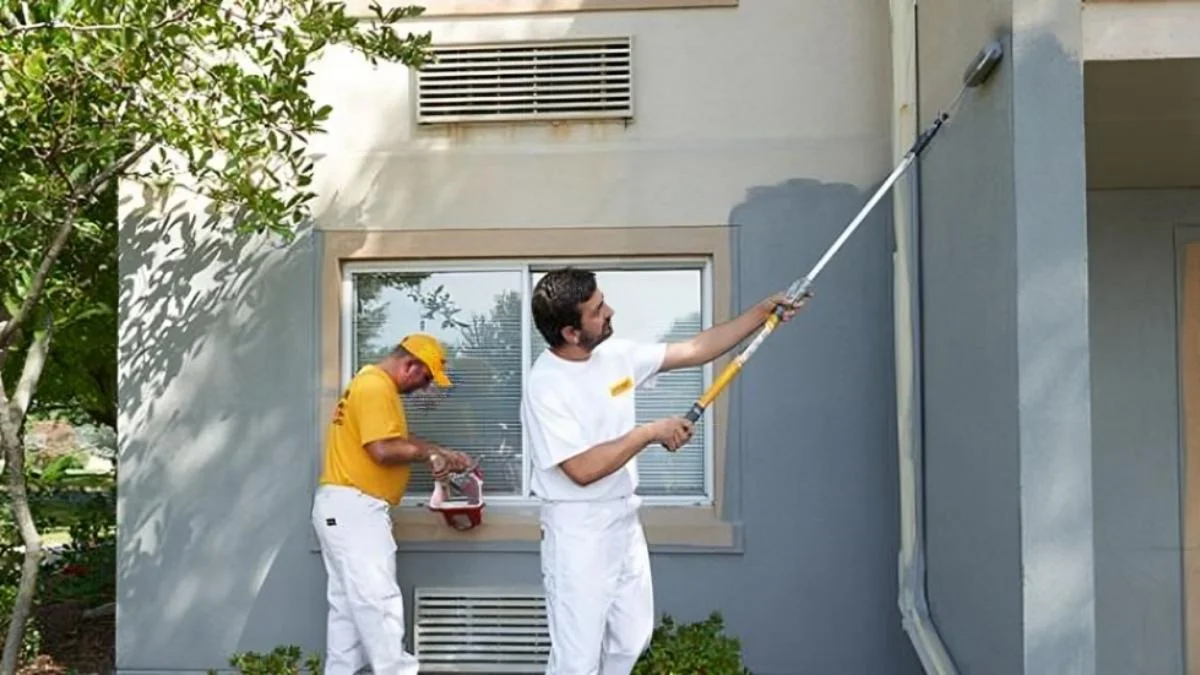HOME IMPROVEMENT
Tips to Protect Your Lawn and Garden While Painting Your North Shore Home

Isn’t it exciting to transform your home’s exterior with a fresh coat of paint? A beautiful lawn and garden enhance the overall charm of your property’s outdoor aesthetics. Professional finishing ensures both stunning results and minimal disruption to your surroundings. Trusted agencies offer expertise that guarantees long-lasting finishes and exceptional customer satisfaction.
Painters in North Shore prioritize seamless processes that protect your property and its surrounding environment. Taking care of exterior structures while painting helps maintain your property’s durability and visual appeal. This guide highlights tips to protect your lawn and garden during your home renovation project. Keep reading to discover effective strategies that ensure a beautiful house and thriving greenery.
1. Plan During Dormant Plant Periods
Schedule projects when plants are dormant to minimize damage from work disruptions. Dormant periods, often in late autumn or winter, reduce plant sensitivity to environmental stress. Skilled North Shore painters recommend this timing to ensure minimal interference with plant growth. Consult gardening experts to confirm dormancy for your specific plants before scheduling. This approach helps balance home improvement with maintaining a thriving and healthy garden.
2. Cover Plants and Lawns with Protective Materials
Use breathable fabric coverings to shield your plants and lawn from paint splatters and debris. Plastic covers are discouraged, as they trap moisture and heat, potentially harming greenery. Trusted painting solutions in North Shore provide effective techniques to protect your garden while delivering professional results. Secure coverings properly to avoid displacement caused by wind or movement during work. Remove these barriers immediately after painting to allow plants to resume healthy respiration.
3. Create Physical Barriers Around Delicate Areas
Install temporary fences or barriers to prevent accidental foot traffic in sensitive garden zones. This practice reduces soil compaction and shields delicate plants from damage during the painting process. North Shore’s skilled painters understand the importance of navigating safely to preserve your carefully curated garden spaces. Mark clear pathways for painters to minimize disruption and maintain an organized work environment. Thoughtful planning ensures both a stunning job and a well-protected garden.
4. Water Your Plants Before the Painting Begins
Hydrate your plants thoroughly before the painting starts to prepare them for temporary environmental stress. Moist soil reduces airborne dust, preventing particles from adhering to freshly painted surfaces. Professional painting services prioritize creating a garden-friendly strategy that supports plant health throughout the project. Avoid overwatering, which may lead to soggy soil and potential root damage during the work. This essential step keeps your plants resilient and your garden thriving.
5. Prune Overgrown Branches and Shrubs
Trim back overgrown branches or shrubs to avoid accidental contact with freshly painted walls and trim. Pruning enhances plant health, allowing sunlight and air circulation to reach the plants more effectively. Skilled painters can navigate and access surfaces more efficiently when foliage is well-maintained. Dispose of pruned branches and leaves responsibly to keep your work area tidy and functional. Combining pruning with painting ensures a polished home exterior and a vibrant garden in North Shore.
6. Communicate with Your Painting Contractors
Discuss your North Shore garden protection concerns with professional painters to ensure a customized and thoughtful approach to your garden’s care. Clearly outline sensitive areas and specific plants requiring special care during the painting process. Trusted professionals value collaboration and adapt their methods to preserve the integrity of your lawn and garden. Open communication creates a seamless balance between achieving stunning results and maintaining outdoor aesthetics. Such partnerships lead to successful projects and homeowner satisfaction.
A fresh paint job transforms your home while preserving the beauty of your outdoor spaces. Skilled painters in North Shore provide tailored solutions that prioritize quality work and garden protection. Their expertise ensures that your property looks stunning without compromising the health and vibrancy of your lawn. Reach out today to experience professional services that exceed expectations and enhance your home’s appeal. Trust dedicated professionals to deliver exceptional results, making your renovation stress-free and highly rewarding.
-

 BIOGRAPHY7 months ago
BIOGRAPHY7 months agoBehind the Scenes with Sandra Orlow: An Exclusive Interview
-

 HOME1 year ago
HOME1 year agoDiscovering Insights: A Deep Dive into the //vital-mag.net blog
-

 HOME1 year ago
HOME1 year agoSifangds in Action: Real-Life Applications and Success Stories
-

 BIOGRAPHY1 year ago
BIOGRAPHY1 year agoThe Woman Behind the Comedian: Meet Andrew Santino Wife




























